Best Study Material for CLAT Exam
CLAT Exam > CLAT Notes > Current Affairs: Daily, Weekly & Monthly > UPSC Daily Current Affairs- January 11, 2022
UPSC Daily Current Affairs- January 11, 2022 | Current Affairs: Daily, Weekly & Monthly - CLAT PDF Download
GS-I
Darvaza Gas Crater
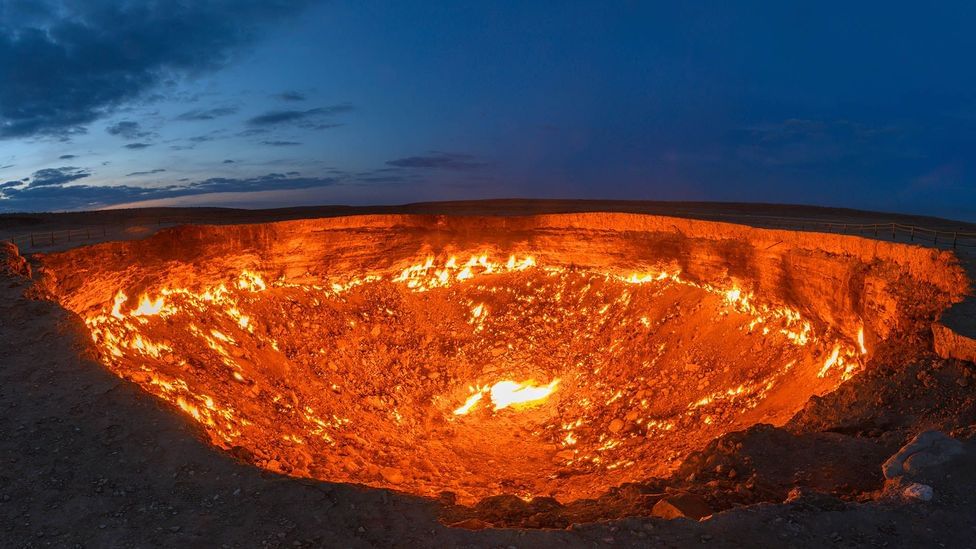
Context
- Turkmenistan President has ordered experts to find a way to extinguish a fire in a huge natural gas crater, the Darvaza gas crater also known as the ‘Gateway to Hell’.
About Darvaza Gas Crater
- Located in the Karakum desert, 260 kilometres away from Turkmenistan’s capital, Ashgabat, the crater has been burning for the last 50 years.
- The crater is 69 metres wide and 30 metres deep.
- While the details of the origin of the crater are contested but it has been said that the crater was created in 1971 during a Soviet drilling operation.
- In 1971, Soviet geologists were drilling for oil in the Karakum desert when they hit a pocket of natural gas by mistake, which caused the earth to collapse and ended up forming three huge sinkholes.
A popular tourist attraction
- The crater has become a significant tourist attraction in Turkmenistan.
- In 2018, the country’s president officially renamed it as the “Shining of Karakum”.
Why is it flamed?
- This pocket of natural gas contained methane, hence to stop that methane from leaking into the atmosphere, the scientists lit it with fire, assuming the gas present in the pit would burn out within a few weeks.
- The scientists seemed to have misjudged the amount of gas present in the pit, because the crater has been on fire for five decades now.
Why did Turkmenistan order to extinguish it?
- Calling it a human-made crater, it has negative effects on both environment and the health of the people living nearby.
- It also ends up losing valuable natural resources for which could fetch significant profits.
How harmful are methane leaks?
- Methane is the primary contributor to the formation of ground-level ozone, a hazardous air pollutant and greenhouse gas, exposure to which causes 1 million premature deaths every year. Methane is also a powerful greenhouse gas.
- Over a 20-year period, it is 80 times more potent at warming than carbon dioxide.
GS-II
Model Code of Conduct(MCC)

Context
- With the announcement of the seven-phase polling for assembly elections for five states on, the Model Code of Conduct (MCC) has come into force with immediate effect.
About Model Code of Conduct(MCC)
- The MCC is a set of guidelines issued by the Election Commission to regulate political parties and candidates prior to elections, to ensure free and fair elections.
- This is in keeping with Article 324 of the Constitution, which gives the Election Commission the power to supervise elections to the Parliament and state legislatures.
- The MCC is operational from the date that the election schedule is announced till the date that results are announced.
- The form of the MCC was first introduced in the state assembly elections in Kerala in 1960.
- The MCC is not enforceable by law.
- However, certain provisions of the MCC may be enforced through invoking corresponding provisions in other statutes such as the Indian Penal Code, 1860, Code of Criminal Procedure, 1973, and Representation of the People Act, 1951.
- Evolution: The Election Commission issued the code for the first time in 1971 (5th Election) and revised it from time to time.
- This set of norms has been evolved with the consensus of political parties who have consented to abide by the principles embodied in the said code and also binds them to respect and observe it in its letter and spirit.
China’s disputed ‘Developing’ Country Status at WTO
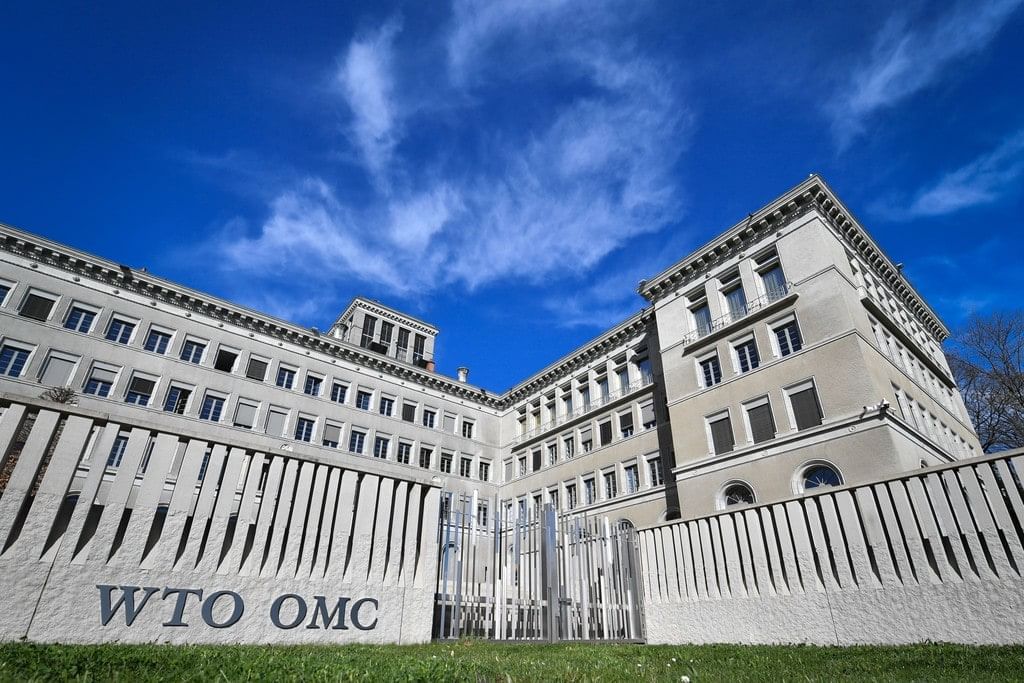
Context
- China’s status as a ‘developing country’ at the World Trade Organization (WTO) has become a contentious issue with a number of countries raising concerns.
Defining a country’s ‘Development’
- There are no WTO definitions of “developed” or “developing” countries.
- Developing countries in the WTO are designated on the basis of self-selection although this is not necessarily automatically accepted in all WTO bodies.
- The WTO however recognizes as least-developed countries (LDCs) those countries which have been designated as such by the United Nations.
Benefits of ‘Developing Country’ tag
- Special and differential treatment: Certain WTO agreements give developing countries special rights through ‘special and differential treatment’ (S&DT) provisions.
- Preferential treatment: The classification also allows other countries to offer preferential treatment.
- Longer timeframe for pacts: WTO can grant developing countries longer timeframes to implement the agreements and even commitments to raise trading opportunities for such countries.
Issues with Chinese ‘Developing Country’ status
- China has become an upper-middle-income country according to the World Bank.
- It involves in unfair trade practices such as preferential treatment for state enterprises, data restrictions and inadequate enforcement of intellectual property rights.
How has China responded?
- China has consistently maintained that it is the “world’s largest developing economy”.
- It has recently indicated that it may be willing to forego many benefits of being a developing country.
What are the benefits of LDC classification?
- The WTO recognizes LDCs relying on a classification by the UN based on criteria that is reviewed every three years. LDCs are often exempted from certain provisions of WTO pacts.
- Bangladesh, currently classified as an LDC, receives zero duty, zero quota access for almost all exports to the EU.
- It is, however, set to graduate from the LDC status in 2026 as its per capita GDP has risen sharply surpassing that of India in FY21.
Pravasi Bharatiya Divas 2022
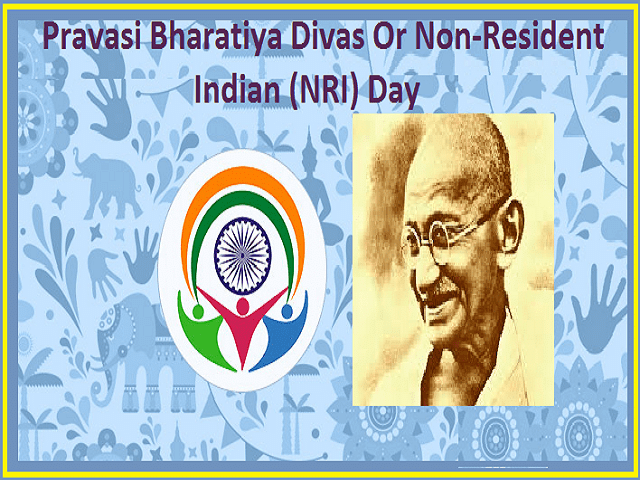
Context
- The Pravasi Bharatiya Divas (PBD) is observed and celebrated on 9 January across the country.
- It is a day to acknowledge and mark the contribution of the Indian community staying abroad in the development of the country.
About Pravasi Bharatiya Divas (PBD)
- The theme of 16th PBD Convention 2021 is: "Contributing to Atma Nirbhar Bharat ''.
- Significance of this day: Mahatma Gandhi returned to India from South Africa, is celebrated grandly to strengthen the engagement of the Government of India with the overseas Indian community.
- Following his return, the father of the nation began and headed India's freedom struggle and changed the lives of millions of Indians forever.
- The main idea: behind this event is to reconnect the Non-Resident Indian community with their original roots.
- The PBD holds the event with a vast overseas Diaspora to let them share their knowledge, skills and expertise on a common platform.
- History: Since 2003, the PBD Convention has been organizing this Divas from 7 to 9 January every year in the national capital.
- Later on, in 2015, the format was revised to mark and observe the PBD convention once every two years.
- The organizers further decided to hold theme-based conferences with participation from policymakers, stakeholders and overseas diaspora experts.
- Pravasi Bharatiya Samman Awards: are conferred to select Indian diaspora members to recognize their achievements and honor their contributions to various fields both in India and abroad.
- Bharat ko Janiye Quiz: was launched in 2015-16 in order to strengthen the engagement with young overseas Indians and encourage them to know more about their country of origin.
New prominence of the Central Asian region
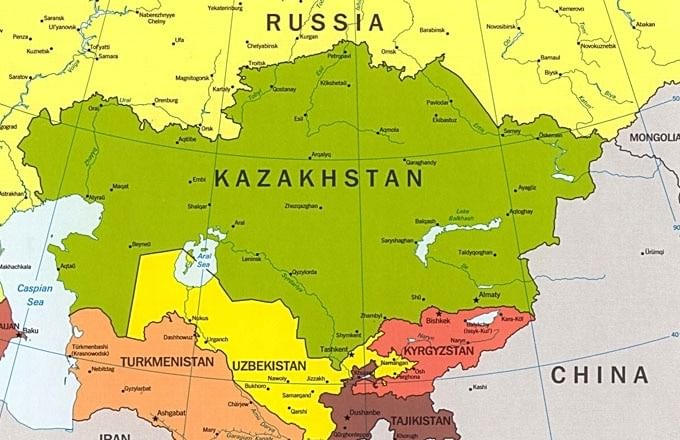
Context
- When Prime Minister Narendra Modi hosts the five Central Asia leaders at the Republic Day Parade on January 26, it will send a strong signal — of the new prominence of the Central Asian region in India’s security calculations.
Leveraging maritime power
- India’s maritime vision and ambitions have grown dramatically during the past decade, symbolised by its National Maritime Strategy, the Security and Growth for All in the Region (SAGAR) and major initiatives relating to the Indo-Pacific and the Quad, in which maritime security figures prominently.
- It was also a response to the dramatic rise of China as a military power.
- Importance: Maritime security is important to keeping sea lanes open for trade, commerce and freedom of navigation, resisting Chinese territorial aggrandisement in the South China Sea and elsewhere, and helping littoral states resist Chinese bullying tactics in interstate relations.
- However, maritime security and associated dimensions of naval power are not sufficient instruments of statecraft as India seeks diplomatic and security constructs to strengthen deterrence against Chinese unilateral actions and the emergence of a unipolar Asia.
- Bulwarks against Chinese maritime expansionist gains are relatively easier to build and its gains easier to reverse than the long-term strategic gains that China hopes to secure on continental Eurasia.
- Centrality of Central Asia: Like Association of Southeast Asian Nations (ASEAN) centrality is key to the Indo-Pacific, centrality of the Central Asian states should be key for Eurasia.
Challenges for India
- Connectivity challenge
- Connectivity means nothing when access is denied through persistent neighbouring state hostility contrary to the canons of international law.
- India has been subject for over five decades to a land embargo by Pakistan that has few parallels in relations between two states that are technically not at war.
- Lack of alternative route: Difficulties have arisen in operationalising an alternative route — the International North-South Transport Corridor on account of the U.S.’s hostile attitude towards Iran.
- With the recent Afghan developments, India’s physical connectivity challenges with Eurasia have only become harder.
- The marginalisation of India on the Eurasian continent in terms of connectivity must be reversed.
- India must be aware of the limitations of the US
- The ongoing U.S.-Russia confrontation relating to Ukraine, Russian opposition to future NATO expansion and the broader questions of European security including on the issue of new deployment of intermediate-range missiles, following the demise of the Intermediate-Range Nuclear Forces (INF) treaty will have profound consequences for Eurasian security.
- The U.S. would be severely stretched if it wanted to simultaneously increase its force levels in Europe and the Indo-Pacific.
- A major conflict — if it erupts in Central Europe, pitting Russia, Ukraine and some European states — will stall any hopes of a substantial U.S. military pivot to the Indo-Pacific.
- India should be cognisant of the limitations of geography, obvious gaps between strategic ambition and capacity but also the inherently different standpoints of how major maritime powers view critical questions of continental security.
- India is unique as no other peer country has the same severity of challenges on both the continental and maritime dimensions.
Why India needs effective continental policy
- Factors intensifying geopolitical competition: China’s assertive rise, withdrawal of forces of the United States/North Atlantic Treaty Organization (NATO) from Afghanistan, the rise of Islamic fundamentalist forces, the changing dynamics of the historic stabilising role of Russia (most recently in Kazakhstan) and related multilateral mechanisms — the Shanghai Cooperation Organization (SCO), the Collective Security Treaty Organisation, and the Eurasian Economic Union — have all set the stage for a sharpening of the geopolitical competition on the Eurasian landmass.
- Progress in ties: India’s continental strategy, in which the Central Asian region is an indispensable link, has progressed intermittently over the past two decades — promoting connectivity, incipient defence and security cooperation, enhancing India’s soft power and boosting trade and investment.
- It is laudable, but as is now apparent, it is insufficient to address the broader geopolitical challenges engulfing the region.
- To meet this challenge, evolving an effective continental strategy for India will be a complex and long-term exercise.
Conclusion
- India will need to define its own parameters of continental and maritime security consistent with its own interests. In doing so, at a time of major geopolitical change, maintaining our capacity for independent thought and action will help our diplomacy and statecraft navigate the difficult landscape and the choppy waters that lie ahead.
GS-III
 |
Download the notes
UPSC Daily Current Affairs- January 11, 2022
|
Download as PDF |
Download as PDF
Har Gobind Khorana

Context
- Recently, the 100th birth anniversary of the biochemist and chemical biologist Har Gobind Khorana was observed.
About Har Gobind Khorana
- Born: January 9, 1922, Raipur, India [now Raipur, Pakistan]
- Early Life and Education: He was born into a poor family and attended the University of Punjab at Lahore, India (now in Pakistan), and the University of Liverpool, England, on government scholarships.
- Research and Contribution: He began research on nucleic acids during a fellowship at the University of Cambridge (1951) under Sir Alexander Todd.
- He made another contribution to genetics in 1970 when he and his research team were able to synthesize the first artificial copy of a yeast gene.
- His later research explored the molecular mechanisms underlying the cell signalling pathways of vision in vertebrates.
- His studies were concerned primarily with the structure and function of rhodopsin, a light-sensitive protein found in the retina of the vertebrate eye.
- He also investigated mutations in rhodopsin that are associated with retinitis pigmentosa, which causes night blindness.
- Awards: He shared the 1968 Nobel Prize for Physiology or Medicine with Marshall W. Nirenberg and Robert W. Holley for research that helped to show how the nucleotides in nucleic acids, which carry the genetic code of the cell, control the cell’s synthesis of proteins.
- In addition to the Nobel Prize, Khorana received the Albert Lasker Basic Medical Research Award (1968) and the National Medal of Science (1987).
- The Indian government awarded Khorana the Padma Vibhushan in 1969.
- Death: November 9, 2011, Concord, Massachusetts, U.S.)
What is Samba Cultivation?
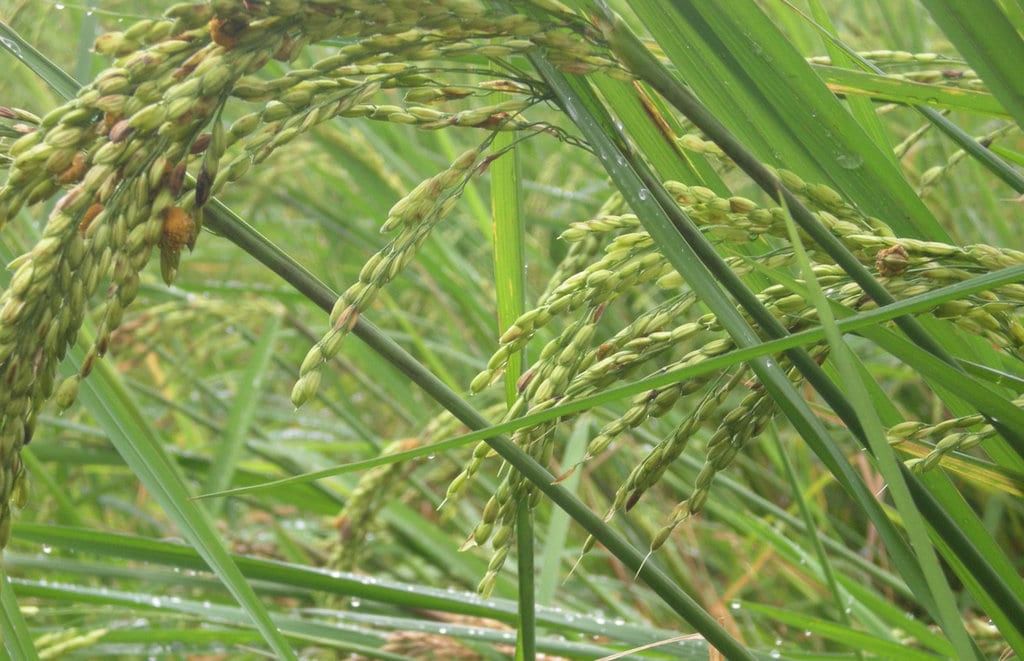
Context
- Around four lakh more acres have been brought under the Crop Insurance Scheme for the Samba Cultivation season of 2021-22 in Tamil Nadu.
About Samba Cultivation
- It is a Tamil name for paddy cultivation season.
- Other paddy seasons in Tamil Nadu include:
- Kuruvai: June-July
- Samba: August
- Late Samba / Thaladi: September- October
- Navarai: December- January
Red Sanders
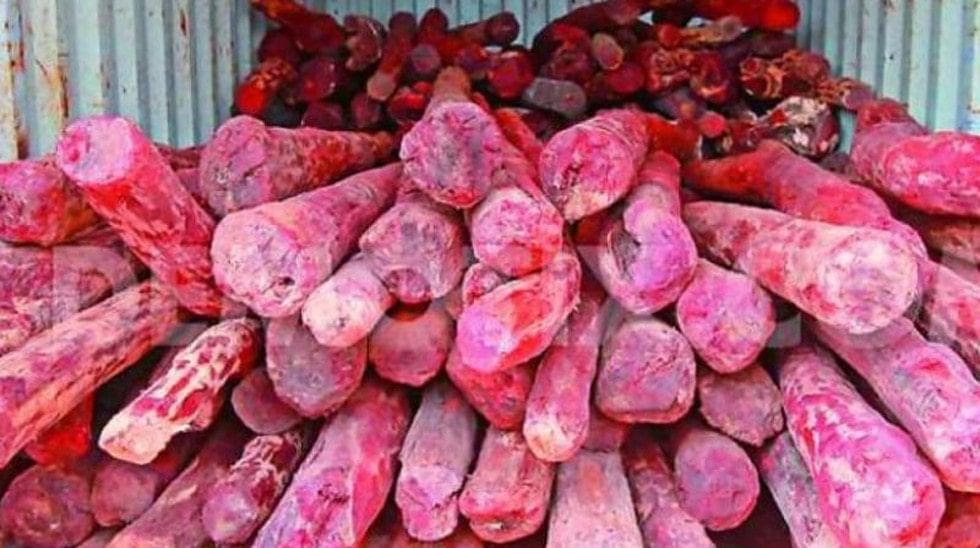
Context
- Red Sanders (Red Sandalwood) has fallen back into the ‘endangered’ category in the International Union for Conservation of Nature’s (IUCN) Red List.
- It was classified as ‘near threatened’ in 2018.
- It was a moment of celebration when the species was lifted off from the endangered category for the first time since 1997.
About Red sanders
- Scientific Name: Pterocarpus santalinus.
- Known for their rich hue and therapeutic properties.
- They are high in demand across Asia, particularly in China and Japan, for use in cosmetics and medicinal products as well as for making furniture, woodcraft and musical instruments.
- Its popularity can be gauged from the fact that a tonne of Red Sanders costs anything between Rs 50 lakh to Rs 1 crore in the international market.
- Distribution
- They are usually growing in the rocky, degraded and fallow lands with Red Soil and a hot and dry climate.
- It is an Indian endemic tree species, with a restricted geographical range in the Eastern Ghats.
- The species is endemic to a distinct tract of forests in Andhra Pradesh.
- Threats
- Over-exploitation, cattle grazing and invasive species and smuggling.
- Protection Status
- It is listed in Appendix II of the Convention on International Trade in Endangered Species of Wild Fauna and Flora (CITES).
The document UPSC Daily Current Affairs- January 11, 2022 | Current Affairs: Daily, Weekly & Monthly - CLAT is a part of the CLAT Course Current Affairs: Daily, Weekly & Monthly.
All you need of CLAT at this link: CLAT
|
959 docs|672 tests
|
FAQs on UPSC Daily Current Affairs- January 11, 2022 - Current Affairs: Daily, Weekly & Monthly - CLAT
| 1. What are the three main subjects covered in the UPSC exam? |  |
| 2. What is the significance of UPSC Daily Current Affairs in the UPSC exam preparation? |  |
Ans. UPSC Daily Current Affairs plays a crucial role in the UPSC exam preparation as it helps candidates stay updated with the latest events, developments, and issues happening around the world. It helps in developing a holistic understanding of various subjects and enhances the overall knowledge and analytical ability of the candidates.
| 3. How can UPSC Daily Current Affairs benefit candidates in the UPSC exam? |  |
Ans. UPSC Daily Current Affairs can benefit candidates in the UPSC exam in several ways. It helps them in gaining a deeper understanding of the current affairs and their relevance to various subjects. It helps in improving their knowledge of national and international issues, government policies, social and economic developments, and technological advancements. It also helps in enhancing their critical thinking, analytical skills, and ability to connect current affairs with the static portions of the UPSC syllabus.
| 4. What is the importance of Frequently Asked Questions (FAQs) in UPSC exam preparation? |  |
Ans. Frequently Asked Questions (FAQs) are important in UPSC exam preparation as they provide a concise and structured way of understanding and revising important topics. They help candidates in clarifying their doubts, gaining a better understanding of the subject matter, and preparing for the exam in a systematic manner. FAQs also help in identifying the most relevant and frequently asked questions that are likely to be encountered in the UPSC exam.
| 5. How can candidates effectively use UPSC Daily Current Affairs in their exam preparation? |  |
Ans. Candidates can effectively use UPSC Daily Current Affairs in their exam preparation by regularly reading and analyzing the current affairs articles. They should make notes of important facts, events, and issues, and revise them regularly. It is also important to connect the current affairs with the static portions of the UPSC syllabus and understand their relevance in the context of the exam. Candidates can also solve mock tests and practice previous year's question papers to test their understanding and retention of the current affairs content.
Related Searches



























